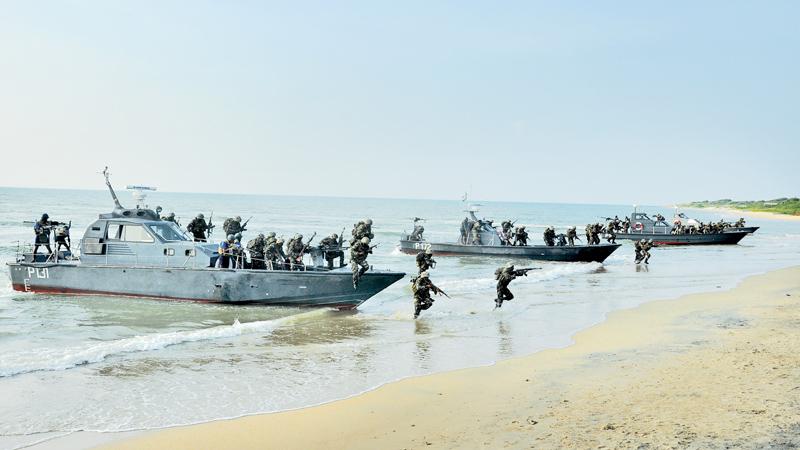
Some people wonder all their lives if they’ve made a difference. The Marines don’t have that problem - Ronald Regan, US President
In a rapidly evolving global platform the security forces of every nation are gearing up to face and mitigate new challenges.
These challenges can be a military theatre of operations or of vital humanitarian emergency relief. The military has the manpower, training, resources and mobility to respond effectively. Unknown to many in this island a contingent of 175 men of the Sri Lanka Navy were being trained in the sunny beaches of Mullikulam, Mannar.
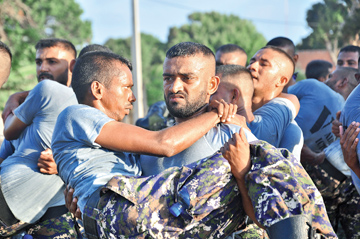 They carry the distinction of being the first batch of the Navy Marine Battalion, established on the visionary thinking of prudent strategist Vice Admiral Ravi Wijegunaratne, present Commander of the Navy. Admiral Wijegunaratne, a brilliant product of Royal College, Colombo, is a specialist in Anti-Submarine Warfare. He is credited in formulating and bringing to life the elite Special Boat Squadron on 18 January 1993 at Karainagar, when he was a Lieutenant Commander. The SBS made an immense contribution, deploying behind enemy lines in their aggressive small teams, during the years of conflict and enabled the armed forces to achieve victory.
They carry the distinction of being the first batch of the Navy Marine Battalion, established on the visionary thinking of prudent strategist Vice Admiral Ravi Wijegunaratne, present Commander of the Navy. Admiral Wijegunaratne, a brilliant product of Royal College, Colombo, is a specialist in Anti-Submarine Warfare. He is credited in formulating and bringing to life the elite Special Boat Squadron on 18 January 1993 at Karainagar, when he was a Lieutenant Commander. The SBS made an immense contribution, deploying behind enemy lines in their aggressive small teams, during the years of conflict and enabled the armed forces to achieve victory.
Maritime history records that the first organized and uniformed Marines were set up by Spanish King Carlos 1 way back in 1537. Basically, a Marine is a naval infantryman. Their initial duties were to maintain order and discipline on ships, as the sailors of that era were a rough band of men. In addition, the Marines also assisted in boarding captured ships and supported raiding operations ashore. Subsequently, the British Admiralty formed their Royal Marines in 1755.
The Royal Marines undergo 32 weeks of basic training today. The US Navy raised the US Marine Corps on 10 November 1775, in Philadelphia. The US Marines have evolved today to engage in a multi faceted role of operations, venturing out of their country. During the 2004 Tsunami relief operations the USMC made a significant contribution alongside our own navy.
The Sri Lanka Navy first raised a Patrolman Branch with only 11 men in 1983. Their primary duties were basic security and convoy escorts. Over the years the Naval Patrolman Branch (NPM) grew steadily and at present has almost 5,000 men, including 263 officers. The men of the NPM made many sacrifices during the period of war. In 2016, Vice Admiral Wijegunaratne was able to take part in the US Pacific Command Amphibious Leaders Symposium in San Diego, California. Here naval leaders discussed new trends in amphibious operations. The Sri Lankan commander had already envisioned establishing a Marine element to enhance naval operations and the conference was a springboard for the new mission.
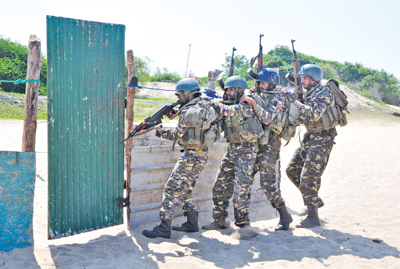 With the arrival of the amphibious transport dock USS Somerset (LPD-25) to Trincomalee, the men of the 11th Marine Expeditionary Unit began an exchange of training for local sailors drawn from the Patrolman Branch. The rigorous training would test the sailors mentally and challenge them physically. Endurance training is a key element of a Marine.
With the arrival of the amphibious transport dock USS Somerset (LPD-25) to Trincomalee, the men of the 11th Marine Expeditionary Unit began an exchange of training for local sailors drawn from the Patrolman Branch. The rigorous training would test the sailors mentally and challenge them physically. Endurance training is a key element of a Marine.
The sailors were also trained in the use of the M-16 assault rifle, which would now be their primary weapon. Emphasis was also placed on night time operating capability, combat medicine, life saving and underwater EOD (explosive ordinance disposal).
They would have the ability to deploy from Off Shore Patrol Vessels, (OPV) like SLNS Sayura and SLNS Sagara. Admiral Wijegunaratne is hopeful that the Navy can get a separate vessel for the Marines to operate as their “mother ship” which would increase their mobility.
At present, the Sri Lankan Marines are based at Mullikulam, Mannar, and would also establish a detachment at Eastern Naval Command, Trincomalee.
At present, they function under the Director Naval Land Operations, Commodore Serasinghe and the units Commanding Officer is Cmdr. Wijerathne. Their motto “Vigour- Valour- Victory” is a reflection of their commitment.
The Marine Battalion would also utilize their skills in Humanitarian Assistance and Disaster Relief (HADR) missions. In the recent past our island was subject to many incidents of flooding and other natural disasters like landslides, which claimed many lives and left hundreds homeless.
The Marines will be able to respond effectively in such situations in the future, working alongside other responding authorities and agencies. The winds of success will sail the gallant Marines to greater heights.
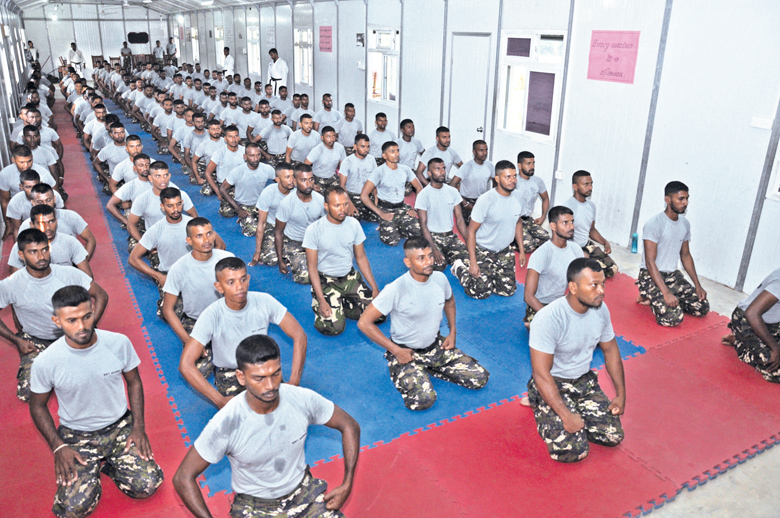
Training in martial art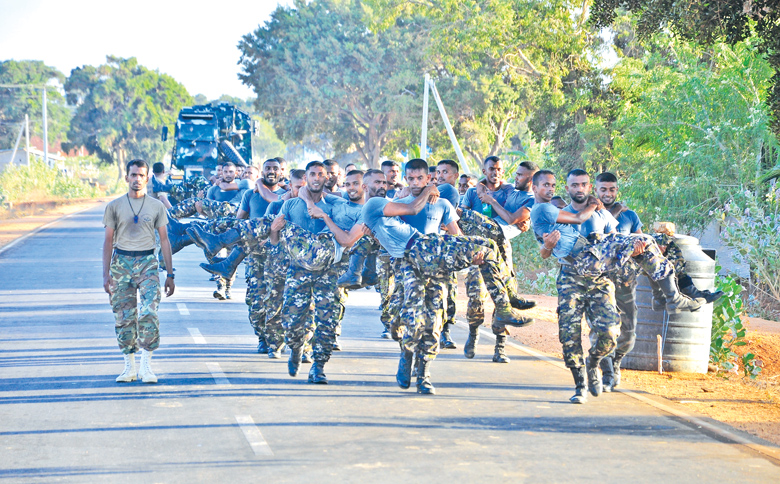
Rehearsal in mass evacuation
